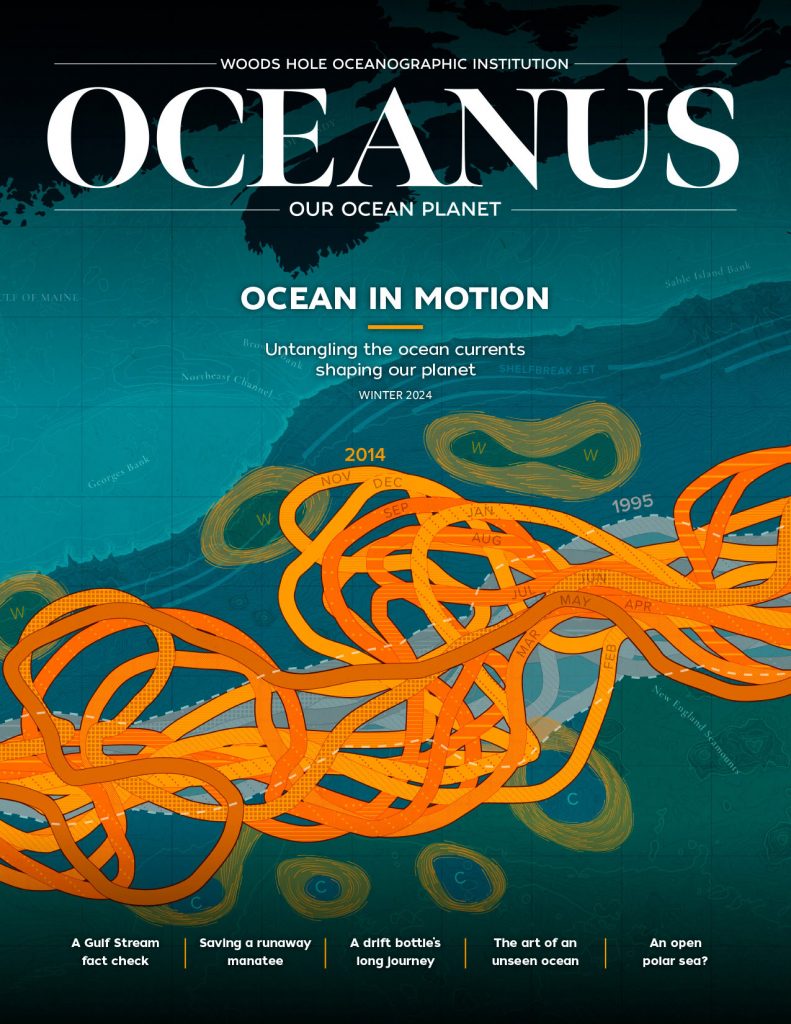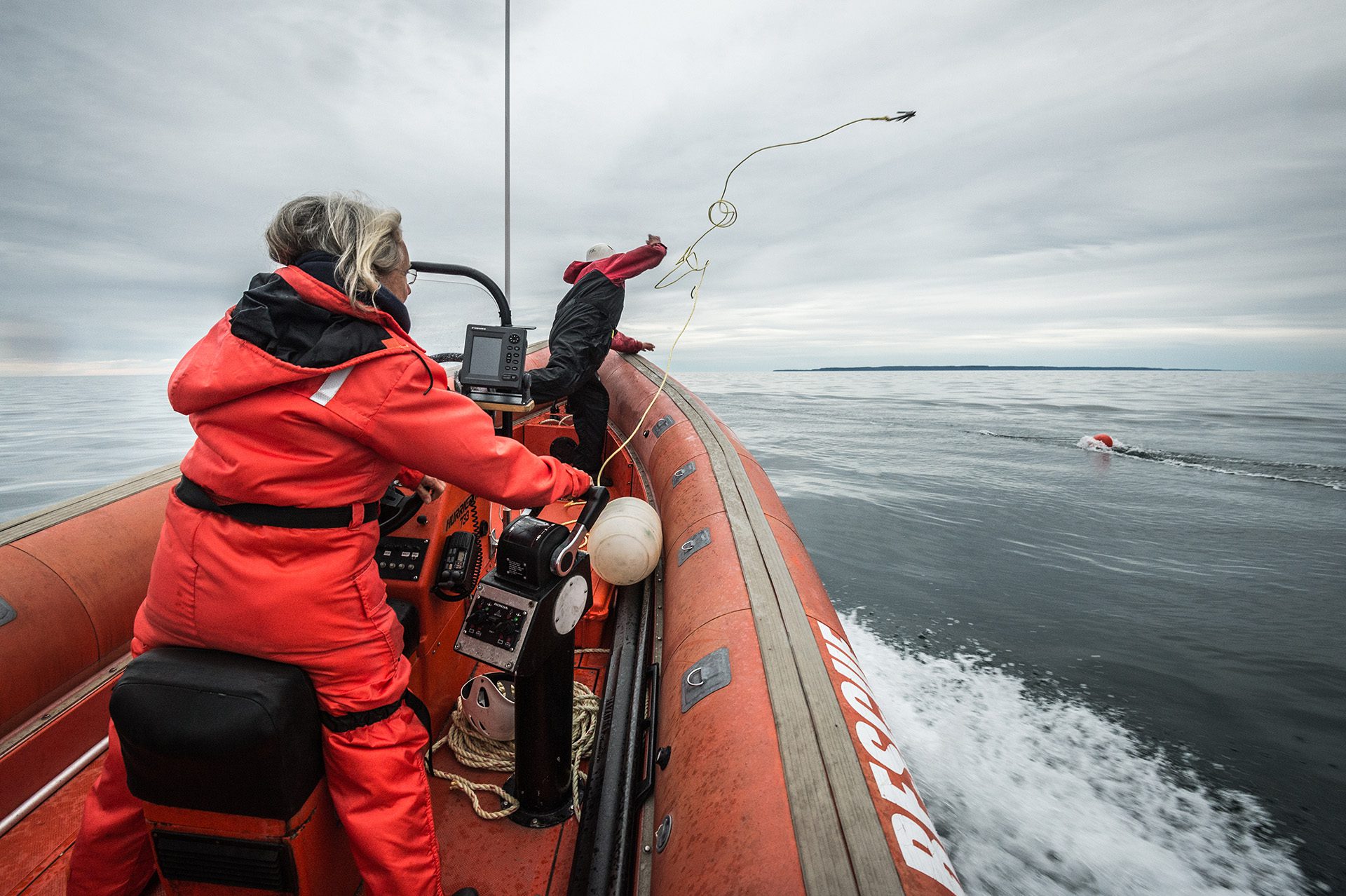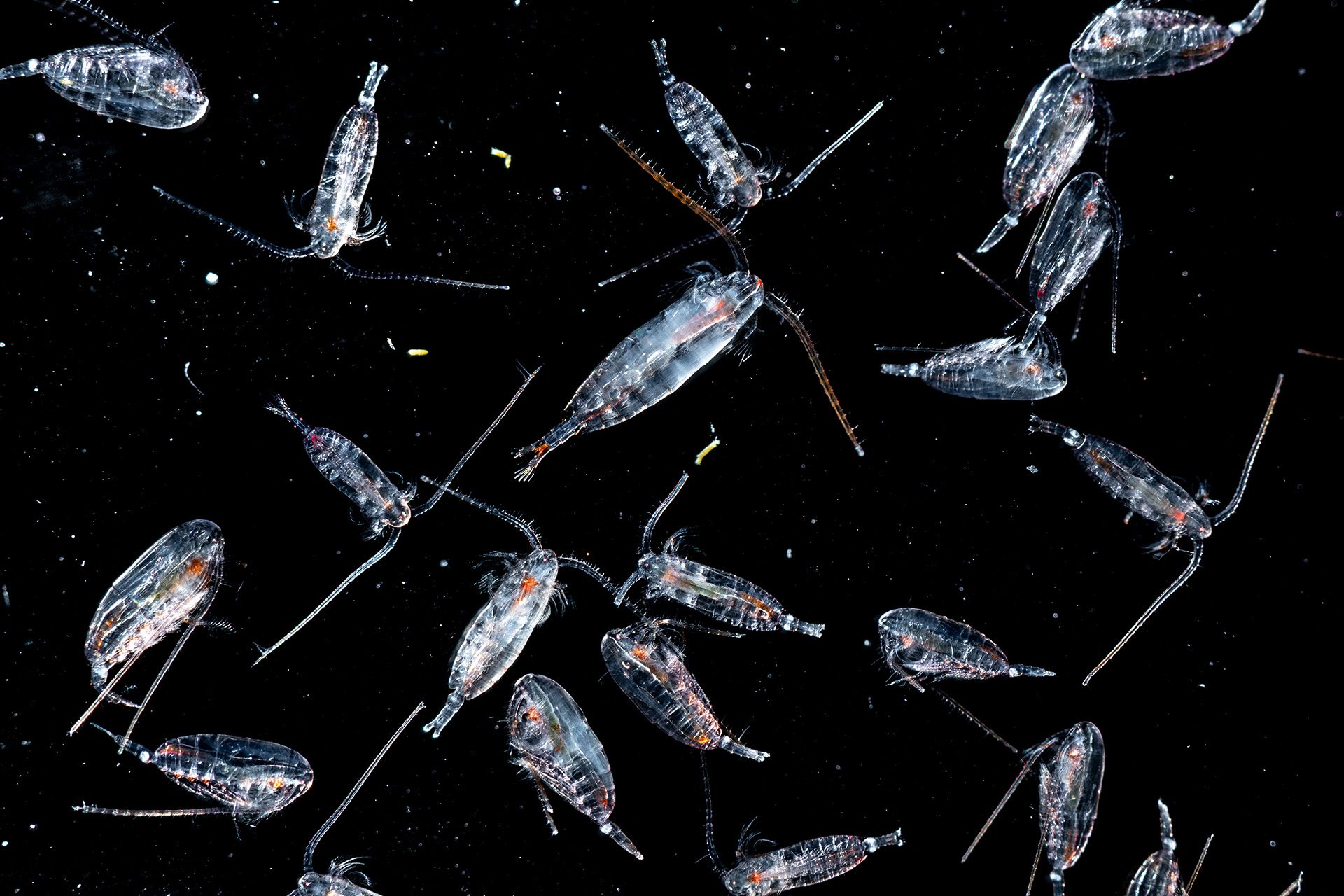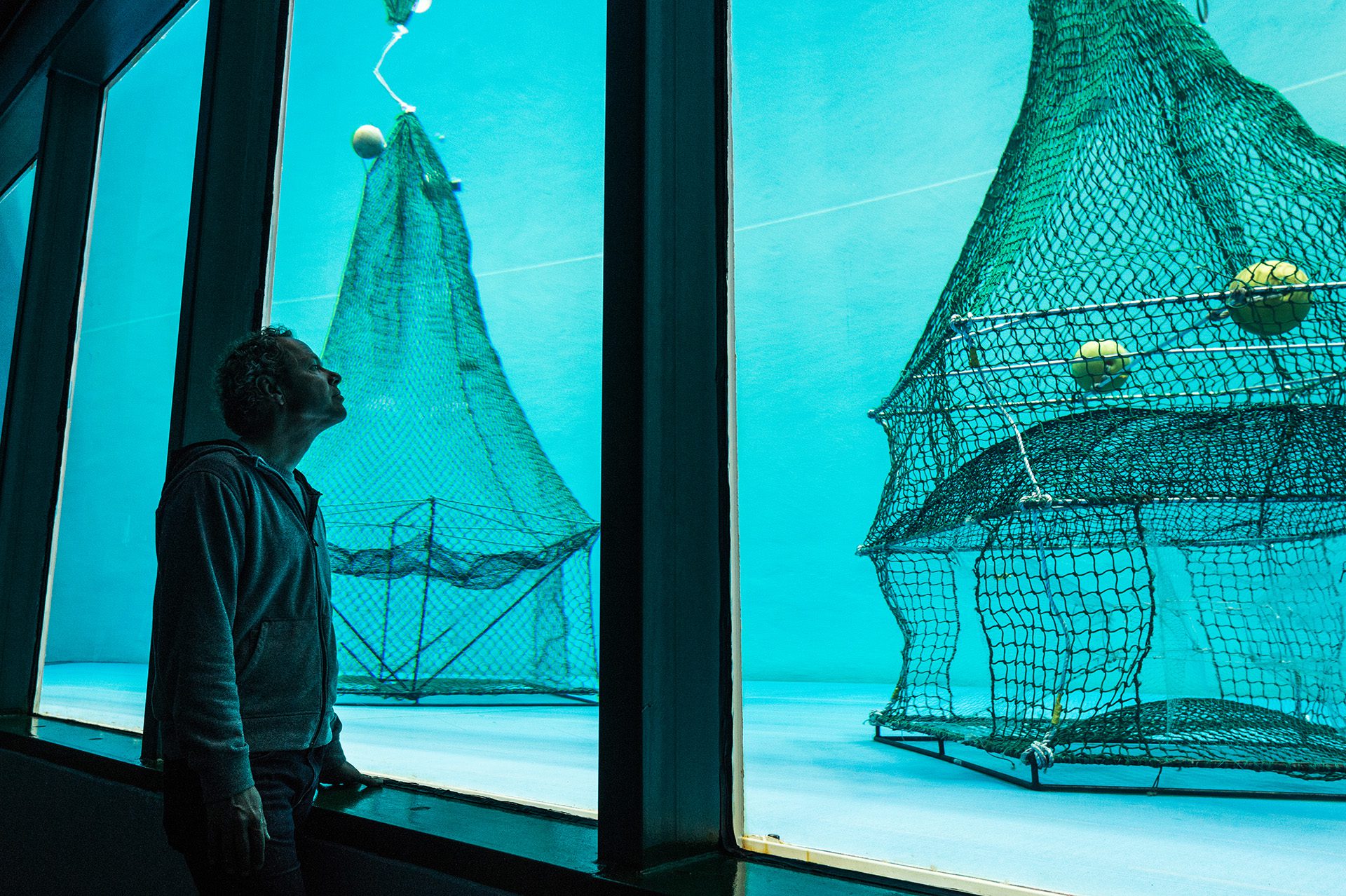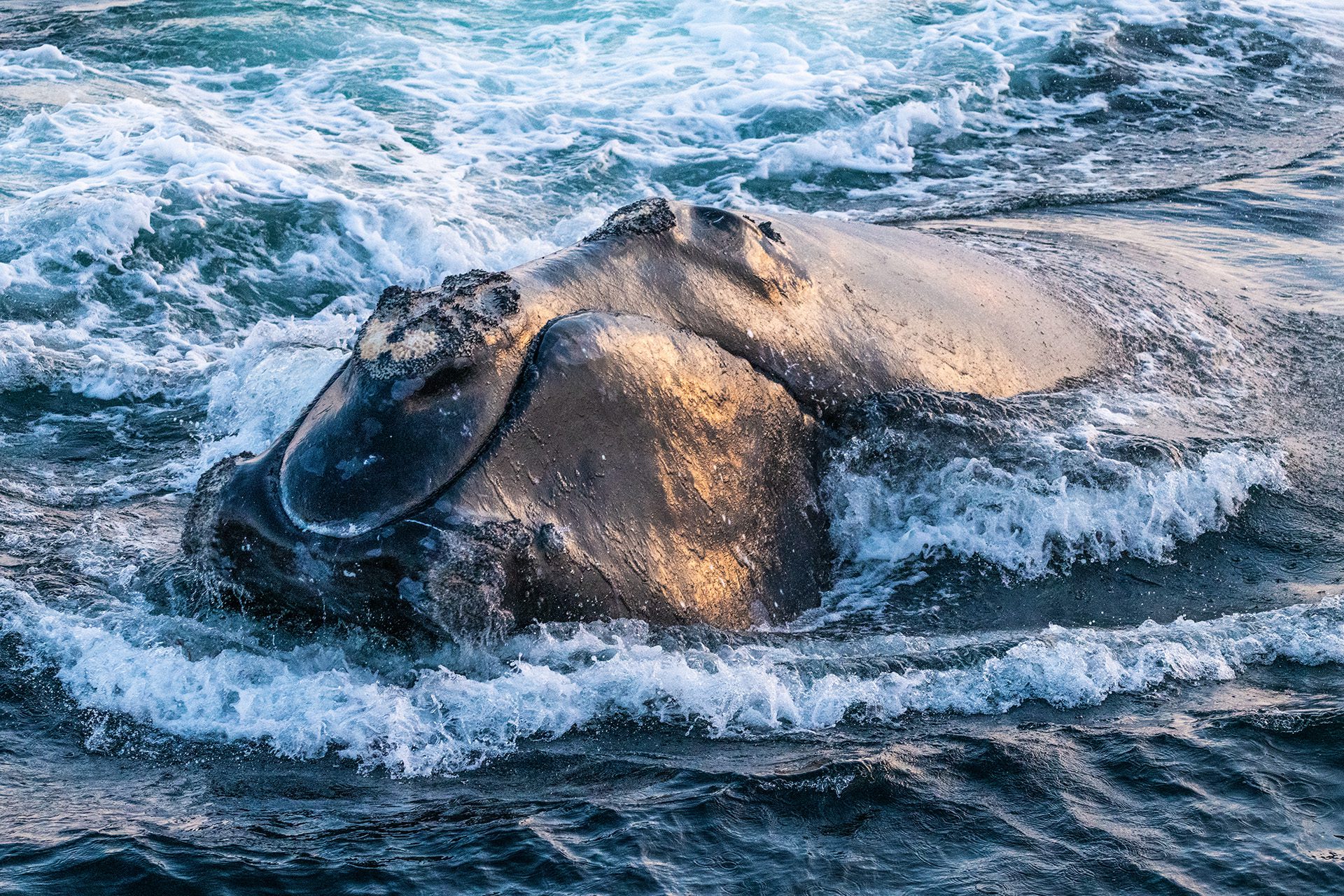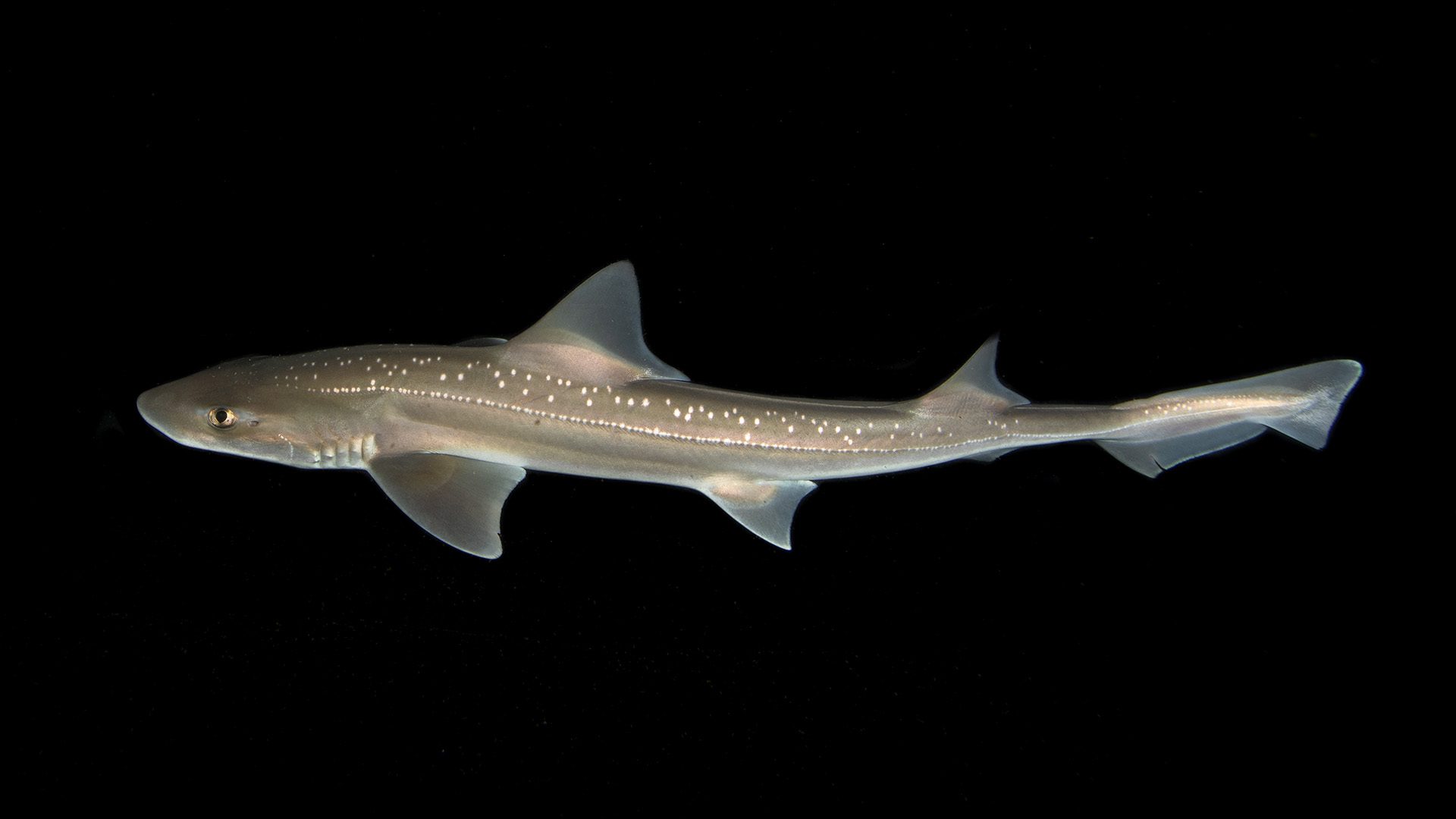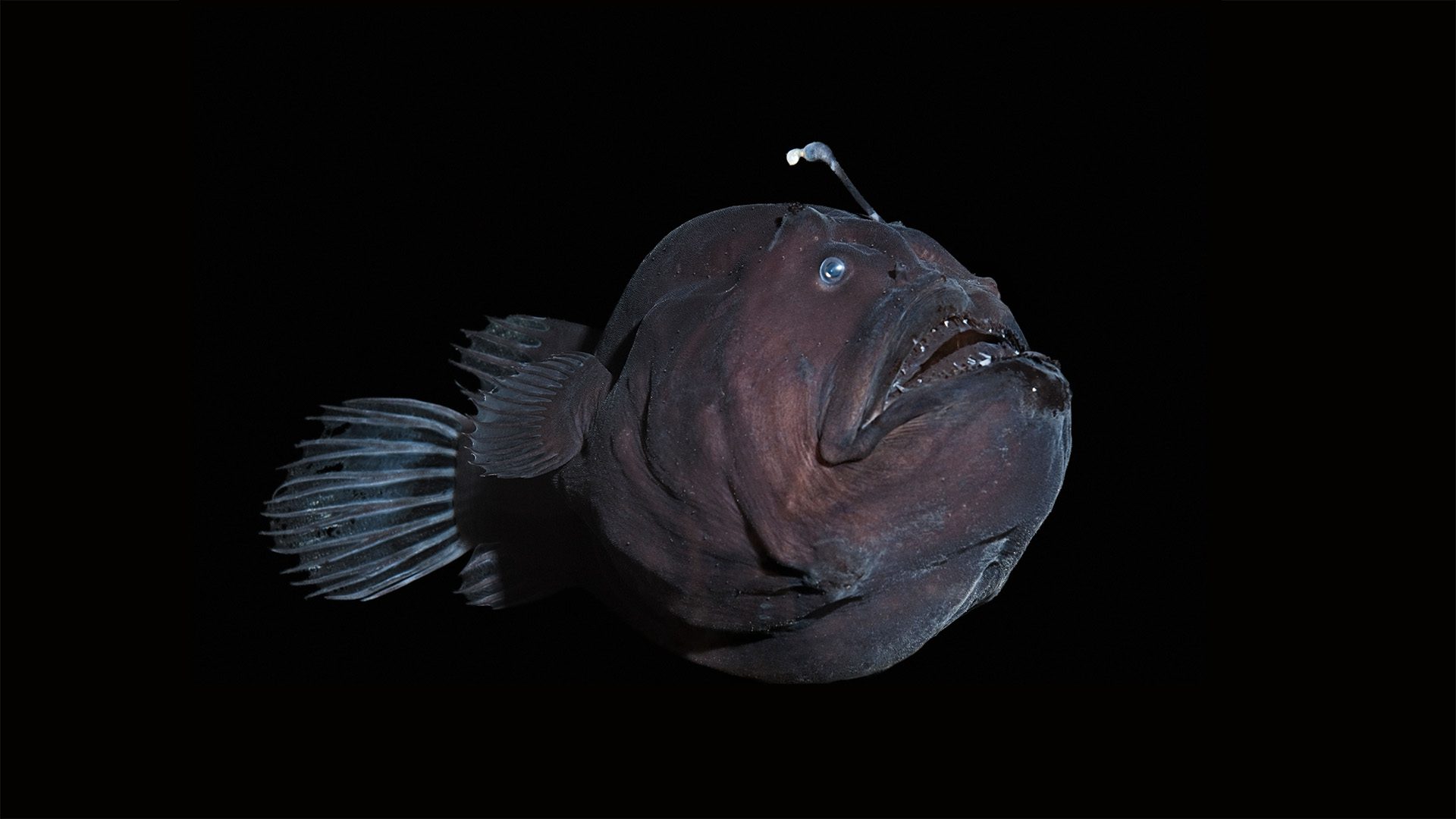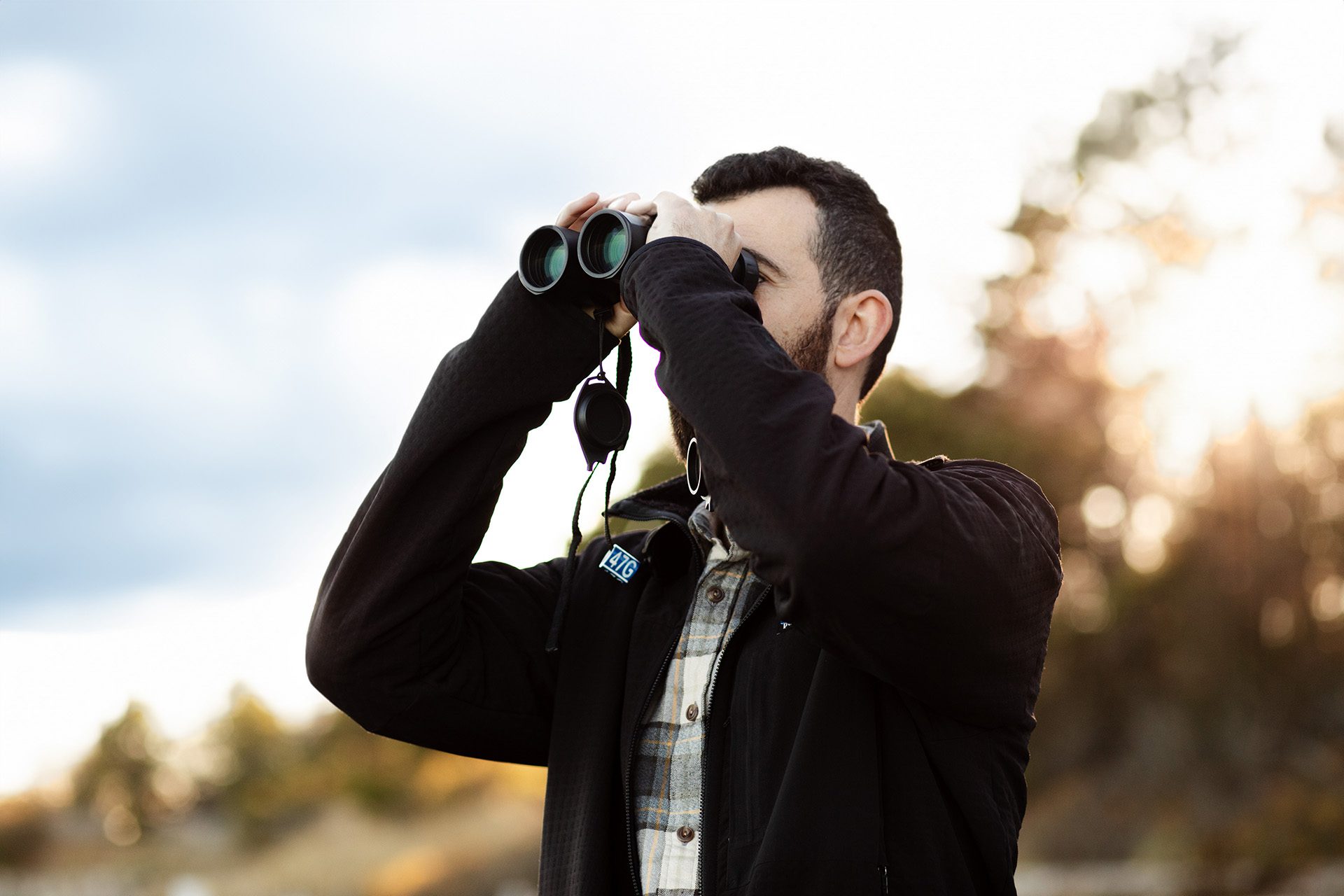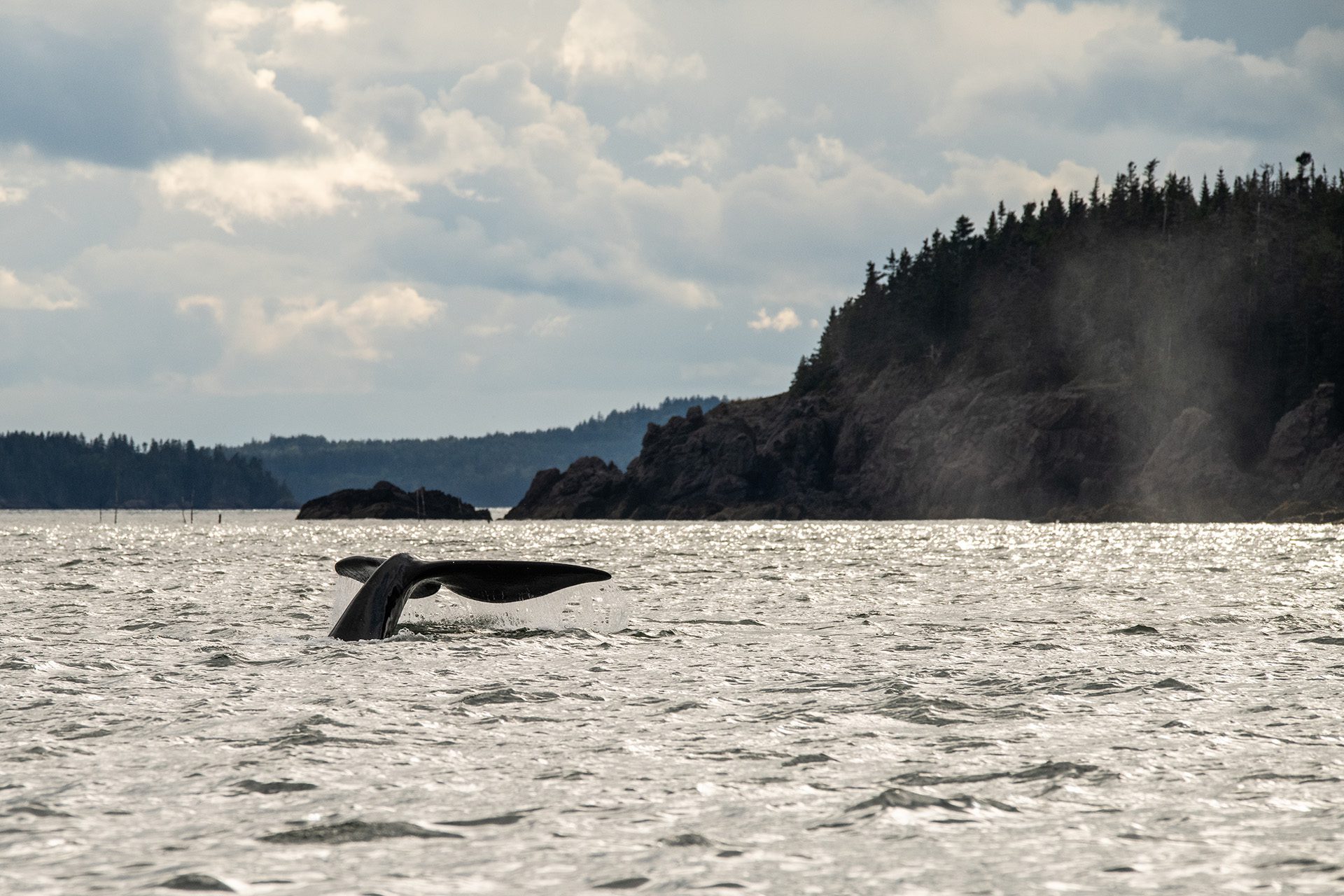
For right whales, a dwindling food source is causing concern
As an important food source wanes in the Gulf of Maine, right whales are forced to venture further north into a minefield of ships and fishing gear
Estimated reading time: 5 minutes
Saving the North Atlantic right whale from extinction has never been easy, but it now may be getting even more difficult due to the depletion of a key food source in the Gulf of Maine.
Until the last 20 years, the Gulf’s cool waters and nutrient-rich currents supported a dense reservoir of the whale’s primary prey—a tiny, energy-rich zooplankton called Calanus finmarchicus. Historically, the area was a temperature Goldilocks zone for the subarctic plankton—the very warmest it could tolerate while still being productive. Now, planetary warming and marine heatwaves dispatched from the Gulf Stream are causing this vital bounty to wane, forcing right whales to forage further north into the Gulf of St. Lawrence for their prey and extending the minefield of fishing gear and ships they need to swim through to do so. The result has been deadly: Calanus populations crashed in the Gulf of Maine in 1999 and again in 2010, each time causing right whales to venture farther north during the foraging season. Many died as a result, including an alarming 17 whales in 2017, 12 of which passed in Canadian waters, mostly from fishing gear entanglements.
"It [feels] like we’re starting to lose more right whales per year than we had since the days of whaling," said Moira Brown, a senior scientist on the Campobello Whale Rescue Team in New Brunswick, Canada. "And it’s a result of these animals shifting their habitat to try to find food and ending up in an area without protection measures."
Brown’s team is one of only a few first responder and volunteer groups that are trained to save entangled whales along Eastern Canada. All together, they oversee a daunting area from the Bay of Fundy to Nova Scotia, the southern Gulf of St. Lawrence and the St. Lawrence Estuary in Québec—an area larger than New England. With so much ground to cover, Campobello Whale Rescue is already spread thin. The influx of hungry right whales, she said, is a relatively new issue for them.
"We have encountered a difficult problem over the last couple of years where an entangled whale is seen from an aircraft, but it's not possible for those spotters to stand by and circle around waiting for us to get there," said Brown. When that happens, "the chances of relocating that whale are pretty darn slim.”
A major reason for the disappearance of the whale’s prey is the disruption of an important seasonal cue. As a subarctic species, Calanus is most active during the colder months of the year, gorging on other tasty zooplankton until the late spring. Under normal conditions, warmer temperatures would signal the species to descend to cooler depths where they can conserve energy in a state of hibernation called diapause, only to later reawaken when temperatures drop again. But today, warming winter temps due to climate change are stretching the number of months that Calanus sleeps, causing them to wake up later and be productive for shorter periods of time each year.
“Calanus is supposed to diapause in October and yet we see them happy and swimming this past year,” says Rubao Ji, a WHOI plankton ecologist who is tracking the issue. “It just goes to show that we need to know more about what’s really going on before we incorporate that information into a model.”
If this trend continues, scientists say it could compromise a crucial pitstop for right whales, forcing them to spend more energy traveling to get their food. For this reason, experts like Ji are trying to project how long Maine’s Calanus populations will last—information that could help conservationists brace for the impact on whales.
“We want to know if warming is really going to change the whole habitat such that Calanus cannot survive anymore,” said Ji. Plankton are, by definition, drifters, he added, so they can’t swim their way out of this kind of problem.
Some studies have cast ominous warnings that Calanus could disappear from the Gulf of Maine as soon as 2030. Ji says it’s more complicated than that.
“What is going on in the Gulf of Maine is so difficult to study because it's right along the margin of this plankton’s distribution, the edge of their geography,” said Ji. “This is a long-lasting puzzle.”
For now, changes in North Atlantic right whale foraging habits have not gone without some response. In 2016, the Canadian government launched the Ocean Protection Plan, which supported a battery of protective measures. New laws have since reduced shipping speeds in high-traffic areas and made it mandatory for fishing boat captains to report lost gear, free of judgment. Many of Canada's snow crabbers and lobstermen have complied, Brown said, but there’s still plenty of work left to transition the commercial fleet away from fixed fishing gear to rope-on-demand gear—where retrieval lines are stowed on the seafloor and out of the path of passing whales.
“We still see whales anywhere from four hours to a couple of weeks after an initial sighting, and they're now entangled,” says Brown. “So, we know that gear is remaining on the bottom.”
Despite these changes, experts like WHOI biologist Mark Baumgartner caution that the disappearance of Calanus in one area will not necessarily mean the whale's disappearance from the Gulf of Maine or southern New England, for that matter. If anything, he adds, these changes mean officials should be ramping up efforts to “whale-proof” the entire East Coast.
“Currently, less than half of the North Atlantic right whale population has actually been seen in the Gulf of St. Lawrence," said Baumgartner. "So, the idea that all the whales will now just go to the Gulf of St. Lawrence, and we don't have to worry about them anywhere else is not true."
With only 70 breeding females left, North Atlantic right whales (and their responders) will count on rapid adaptation from humans across both the U.S. East Coast and eastern Canadian provinces, a responsibility made more urgent by declines in the whale’s food source. Still, experts emphasize that changes to Calanus finmarchicus will ultimately not be the true death knell for right whales. Some, like Baumgartner, say the mammal's ability to still find this prey, however far from where it used to be, can be seen as a sign of its resilience.
“If Calanus changes, right whales have shown that they can change with it,” he said. "We need to give right whales a chance to adapt to this climate change, but they can't if we keep killing them."
